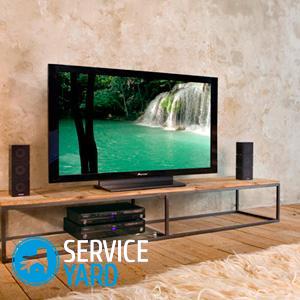Which TV is better than plasma or LCD or ice?
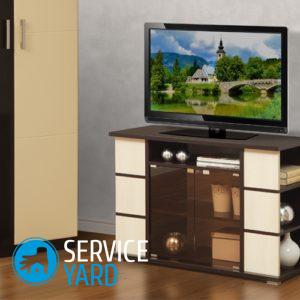
The modern TV market is very diverse and it is simply impossible to choose a suitable model using the “like - dislike” method. Many TVs are made using different technologies, and each has its own advantages and disadvantages. Therefore, today we will try to understand the basic parameters of the device so that you can determine for yourself which TV is better - plasma or LCD or LED, just for your needs.
to contents ↑What is what?
The principle of operation of the most common television sets (CRTs) is known to every person who has not skipped physics lessons. This technique works as follows:
- Inside the cathode ray tube, electrons knock out photons from the phosphor.
- As a result of this action, each dot on the screen acquires its own color.
- From multi-colored dots, an image is formed, which is drawn along the lines.
Important! The whole process is carried out at a speed of 25 frames per second.
Of course, the operation of conventional tube TVs gave the consumer certain problems, namely:
- The image flickers, and this adversely affects vision.
- Electromagnetic radiation - also does not add health.
- The large dimensions of the device, due to the size of the tube, does not add comfort, especially in a small apartment.
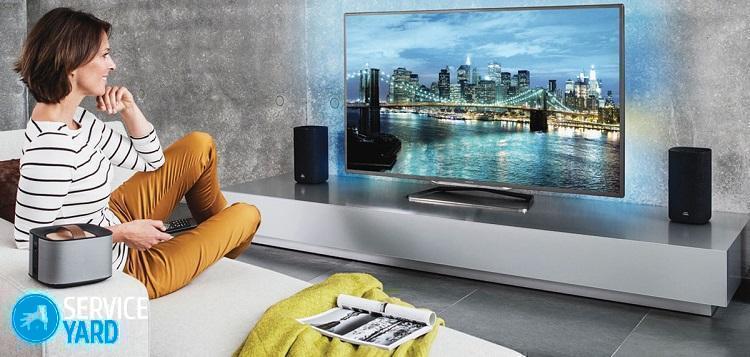
Important! Familiar tube TVs are also inferior to modern counterparts and in technical characteristics, such as: contrast, image brightness, viewing angle. Therefore, few people welcome such devices, most often the question arises: which TV is better - plasma or LCD or LED?
Modern television devices are mainly divided into two types:
- Plasma
- Liquid crystal. Which, in turn, differ in the type of backlight and are divided into:
- LED.
- LCD CCFL.
Consider the advantages and disadvantages of television technology to find out which TV is better - LCD or plasma. It should be noted that all the leaders in the TV market produce devices with these new technologies. In our separate review you will findTOP best brands of TVs.
to contents ↑Plasma TVs
The technology of plasma devices is based on a matrix that is filled with gas (neon or xenon). Between two glasses attached to each other, a small space is filled with gas, and an electric grid of wires passes inside.
Important! The electrodes, receiving voltage, ionize the gas and turn it into a plasma, causing the fluorescent elements to glow. Thousands of such elements of different colors and reproduce the image.
The advantages of a plasma panel are obvious:
- Image does not flicker. Frames change smoothly without creating color waves.
- High contrast and color depth.
- Quality color saturation.
- The natural transmission of movements.
- Wide viewing angle (160-170 degrees).
- The resolution of the plasma device is identical to the resolution of the input channel.
- Spectacular slim body.
- Modern design.
- Large selection of models with a diagonal of up to 80 ”.
- Lack of electric and magnetic fields. This is important: firstly, there is no threat to health, and secondly, much less dust settles on the screen.
- All modern models are equipped with computer connectors. If desired, the user can use the TV as an additional display for a computer or laptop.
Long service life (about 20 years).
Important! TV screens require careful care. Our separate review will tell you how to clean the surface of the device and what is contraindicated for it. Follow the link and find out abouttv cleaners.
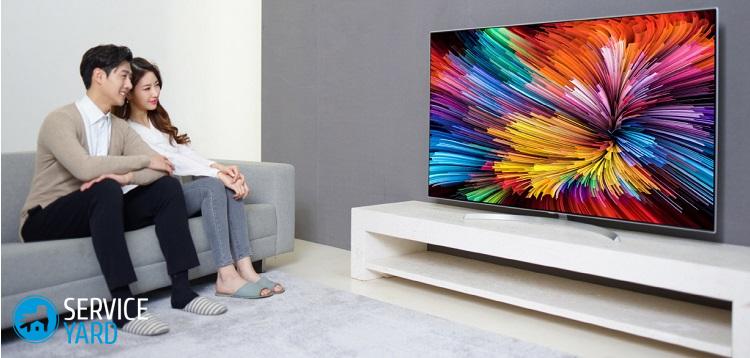
Disadvantages of the plasma model
To determine which TV is better - plasma or LCD or LED, it will not be superfluous to get acquainted with the disadvantages of such, at first glance, ideal TV models:
- The panel has a tendency to burn out. Of course, you need to try for this, since the panel is designed for 30-40 thousand hours of use, and this is 9 years, 8 hours a day.
- Pixelization is visible due to high temperatures.
- High power consumption. For example, a 42 ”model can use up to 350 watts.
- Considerable weight. Some models of plasma TVs weigh up to 90 kg, and to fasten them to the wall you will need a powerful bracket.
Important! To understand which TV is better - plasma or LCD or LED for the price, you need to know the following:
- if you choose a large display size, then plasma models will be cheaper, since it is much more difficult to produce a large liquid crystal matrix than a plasma;
- If you choose relatively small devices, then cheaper LCD TVs.

LCD TV: LED or LCD?
The principle of operation of an LCD TV is as follows:
- Between the two panels is a layer of liquid crystals.
- Crystalline conductive fluid changes under the influence of electric current.
- At an electric field voltage, a liquid crystal passes a certain part of the light flux through itself: at one voltage, the pixel glows red, at the other, white, and at the third, yellow.
Important! The crystalline conductive liquid must be illuminated so that the viewer can see the image.
Namely, by the method of backlighting, this type of device is divided into:
- LCD CCFL - liquid crystal display, as a backlight fluorescent lamp with a cold cathode.
- LED - LED backlight.
Important! You need to know the designation of TVs according to the principle of the device in order to understand which TV is better - plasma or LCD or LED:
- LCD and LCD are synonyms, that is, Russian and English abbreviations respectively.
- But LED is almost the same LCD, but with a different type of backlight.

What is the difference between the two types of LCD TVs?
- LED TV, due to the design of the backlight, has the best image quality. On LCD TVs, one lamp illuminates the entire screen, and LEDs have a large number of LEDs, which makes it possible to create local dimming on one part of the display and at the same time increase the brightness on the other.
- LED devices significantly reduce power consumption. This type of backlight allows you to save up to 40% of electricity.
- LED TVs do not use mercury. This advantage allows you to safely dispose of them.
- LED TVs use diodes of various colors, which helps to improve color reproduction.
LCD TVs eliminate the loss of image detail, and this defeats the budget LED models, which, due to the complex diode control system, may display colors incorrectly.
Important! On new TVs, you can watch high-quality satellite or digital television. Use our selection of useful tips on our portal to find outhow to choose a digital set-top box for TV.
Benefits of LCD TVs
Note the main advantages of LCD TVs so that you can understand which TVs are better - LCD or plasma or LED:
- Correct image geometry due to the flat surface of the LCD panel.
- Clear picture reproduction.
- Profitability.
- Low noise.
- Relatively low cost.
Important! Long service life is one of the indisputable advantages of this type of equipment. LCD TVs will last twice as long as plasma TVs, since their life is 75,000 hours versus 30,000 hours.

Disadvantages of LCD:
- Smaller viewing angle.
- Contrast is lower than that of plasma. Black is not saturated enough.
- There is a danger of pixel burnout.
- LCD TVs are significantly smaller than LEDs or plasma models.
LED Benefits
Models using LED technology in their characteristics are something in between the LCD and the plasma:
- The picture quality of the image is much higher than that of LCD TVs.
- Electricity consumes less than plasma models.
Important! However, the price of modern models of LED devices is very high and not everyone can afford it.
Note the positive aspects of LED:
- High contrast image.
- High quality color reproduction.
- Wide viewing angle (average 160 degrees).
- Profitability.
- Environmental friendliness.
- The screen is very lightweight, which is convenient for wall mounting.
- Compactness. The average thickness of the TV is 3 cm.
- Some models connect directly to the Internet and can replace a PC.
Important! The only reason LED TVs have not replaced plasma and LCDs is the high price. The disadvantages of the device include the fact that few of them have models with a diagonal of less than 40 ”. Therefore, if you want to purchase a small TV, you will have to choose from plasma models or LCDs.

Which is better: LCD or plasma TV?
The advantages of the plasma panel are quite obvious: the image does not flicker, nothing in the design threatens the health of viewers, more brightness and contrast, and the viewing angle is 160 degrees. The disadvantages include high power consumption.
If you choose equipment for operational characteristics, then analyze all the advantages and disadvantages of the two types of devices.
Advantages of Plasma Compared to LCD:
- High contrast and color depth.
- Great color saturation.
- Large screen area.
- More natural transmission of movements.
Advantages of LCD:
- The screen does not fade.
- The viewing angle is wider.
- The working resource is at least twice as large as that of Plasma. At the end of the resource, you can change only the light source (lamp), and not the entire screen.
- Low power consumption.
Important! The disadvantages of LCD TVs, compared with Plasma include:
- The contrast of colors suppresses the midtones.
- The natural transmission of movements is complicated by the problem of the “ghost frame” loop.

Which TVs are better than LCD or plasma or LED?
After evaluating all the advantages and disadvantages of each type of TV, you can summarize the following to decide which TV is better - plasma or LCD or LED.
Image quality:
1st place - LED.
2nd place - Plasma.
3rd place - LCD.
Luminous flux (brightness):
1st place - LED.
2nd place - LCD.
3rd place - Plasma.
Important! To date, LCD LEDs are the brightest. Some models are capable of providing brightness of more than 100 foot-lambert, and in the movie theater, if you are lucky, you can get 5 foot-lambert.
Black level:
1st place - Plasma.
2nd place - LED.
3rd place - LCD.
Contrast:
1st place - Plasma.
2nd place - LED.
3rd place - LCD.
Energy consumption:
1st place - LED.
2nd place - LCD.
3rd place - Plasma.
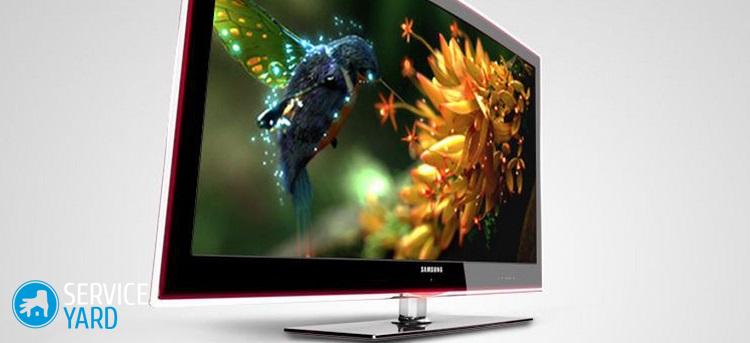
Important! In most cases, designers set aside a separate wall for the TV, focusing on it. We have prepared separate posts that will help you tastefully decorate the interior of the room:
Life time:
1st place - LCD.
2nd place - Plasma.
3rd place - LED.
Price:
Cheaper than all - LCD.
2nd place - Plasma.
3rd place - LED.
It is practically impossible to determine the winner or the outsider by calculating points from the lists above, since these indicators are not equivalent. For one person, the brightness level is important, and for another, the black level is above all.
to contents ↑Important! Maybe someone is very important that the TV has served for many decades, and the picture quality is not so important, then the choice is obvious - LCD. And if you are a movie fan, esthete and have enough money, then buy an LED with a 3D image.
Stock footage
We hope that the above information will help you choose a TV that suits you and your family personally, will delight you in your free time watching your favorite movies and shows. Good luck and quality video!




